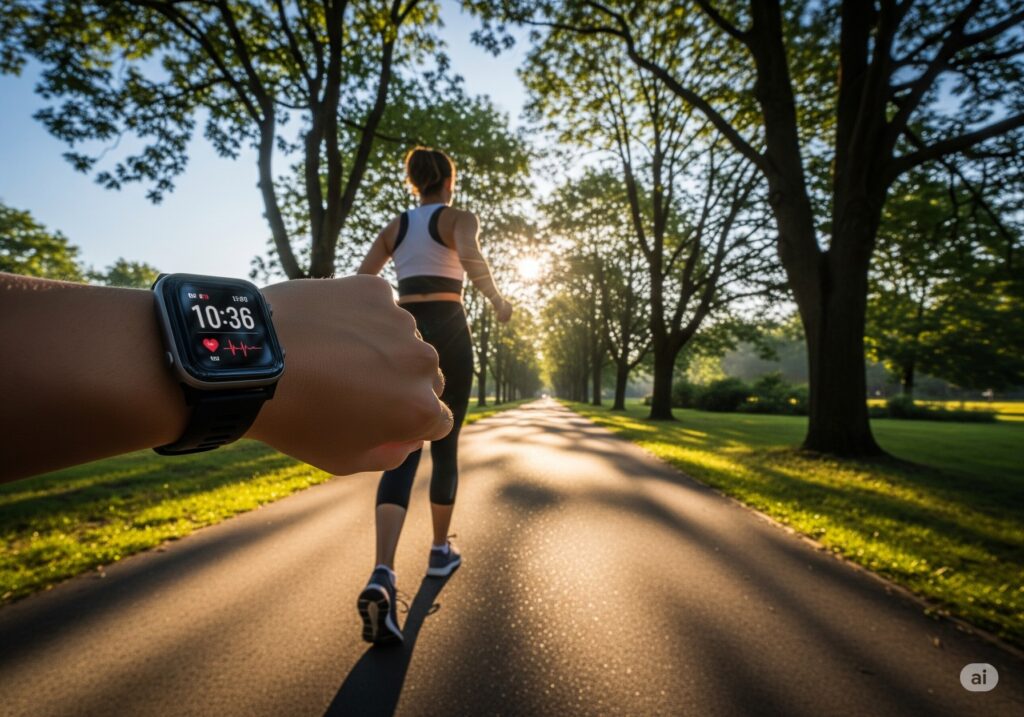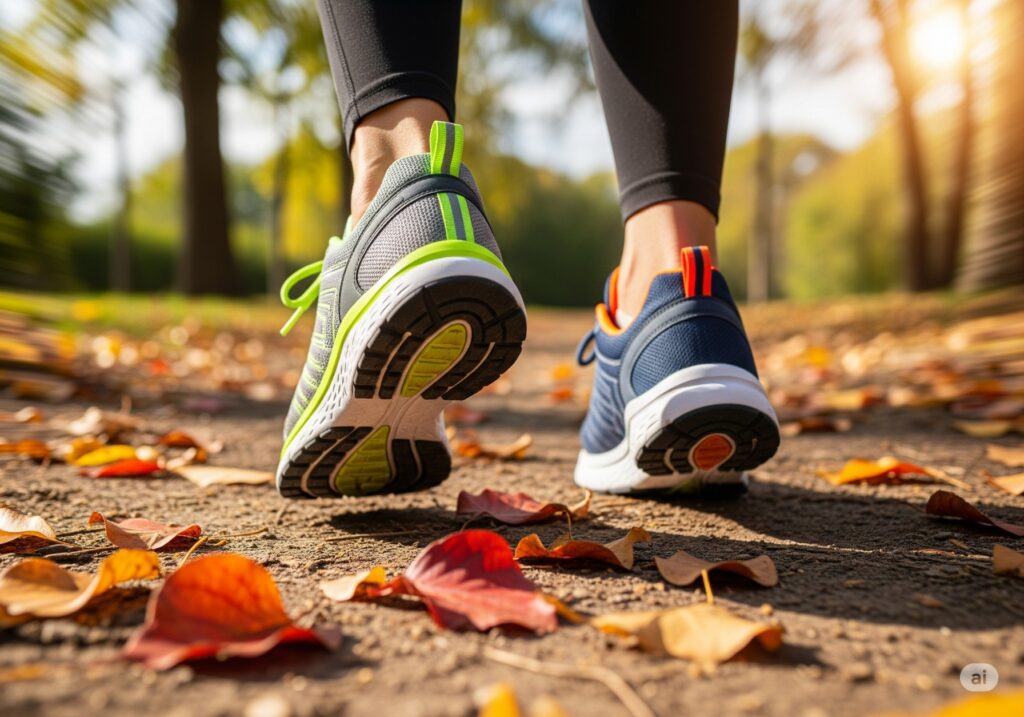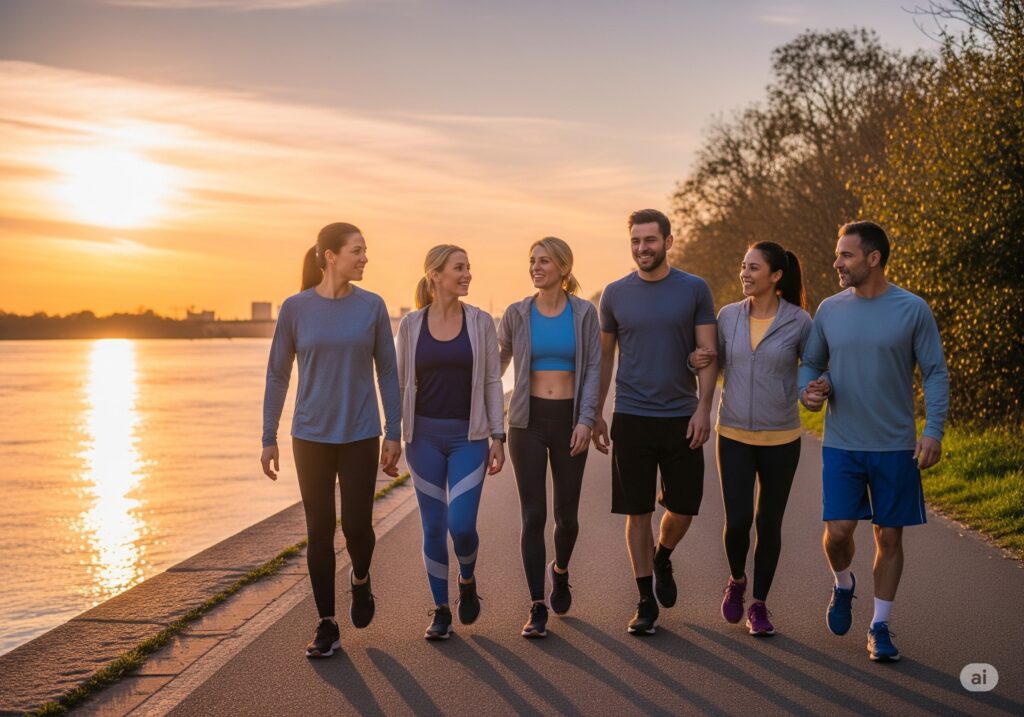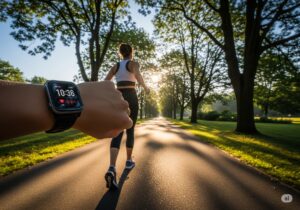
6-6-6 walking trend morning brisk walk path
The 6-6-6 walking trend can boost weight loss and heart health. Learn what it is, why it works, and how to start safely—backed by recent research.
The 6-6-6 Walking Trend Promises Benefits for Weight Loss and Heart Health
Walking is having a moment again. And now the 6-6-6 walking trend is everywhere. The idea is simple. You walk for 60 minutes, ideally at 6 a.m. or 6 p.m., with a 6-minute warm-up and 6-minute cool-down. It’s catchy. But more importantly, it’s doable. And yes, it can support weight loss and heart health.
What does science say? Quite a bit. Recent reporting explains the routine and why it motivates consistency—structure helps us show up day after day. Healthline, Women’s Health, Yahoo Health and new research underscore a clear message: brisk walking—even in short daily doses—pays off for longevity and cardiovascular protection. VUMC News, AJPMonline
What exactly is the 6-6-6 walking trend?

At its core, the 6-6-6 walking trend means:
- 6 minutes to warm up
- 60 minutes of steady, brisk walking
- 6 minutes to cool down
Some versions add flexibility to timing or steps. The “6”s are a memory device, not a rule you must never break. Health and fitness outlets detail these variations and confirm you can do your hour at a time that fits your life. Healthline, Women’s Health, The Times of India
6-6-6 walking trend vs. official guidelines
The routine totals ~60 minutes a day, which can help you reach or exceed the 150 minutes/week of moderate-intensity activity recommended by major health authorities. CDC, www.heart.org, Health.gov. That means the trend slots neatly into evidence-based advice.
Why the 6-6-6 walking trend can aid weight loss
Weight loss comes from a calorie deficit over time. Walking helps you burn energy without punishing your joints. An hour of brisk walking can meaningfully increase daily energy expenditure, especially when paired with balanced nutrition. Moreover, routines that feel “automatic”—same time, same route—are easier to repeat. Coverage of the trend highlights exactly that: structure builds consistency, and consistency drives results. Healthline, Women’s Health
But pace matters, too. A large study from Vanderbilt University Medical Center found that just 15 minutes of fast walking per day was linked to ~20% lower risk of death, especially from cardiovascular causes—underscoring that brisk beats slow when you can manage it. VUMC News, AJPMonline. While that study focused on longevity rather than weight loss, it reinforces the value of moving with intent.
Tip: Aim for a pace where holding a conversation is possible but a little breathy—that’s moderate intensity for most people. Official guidance frames this as “moderate” effort, and it’s exactly what the 6-6-6 hour encourages. CDC, www.heart.org
How the 6-6-6 walking trend supports heart health

The cardiovascular case for walking is strong:
- It helps lower blood pressure and improve lipids. www.heart.org
- It reduces cardiovascular disease risk and supports long-term heart health. www.heart.org+1
- Even small daily bouts of activity can help, and brisk is best when possible. AJPMonline
And if an hour feels long some days, research shows you can split walking into shorter bouts and still capture important benefits—great for busy schedules. PMC, ScienceDirect
Getting started with the 6-6-6 walking trend
You don’t need special gear. But a little planning goes a long way.
Warm-up (6 minutes). Start easy. Swing your arms. Loosen your ankles and hips. This primes muscles and reduces injury risk—one reason the trend bakes warm-ups in. Healthline
Brisk block (up to 60 minutes). Settle into a pace that raises your heart rate but still lets you speak in short sentences. If you’re newer, build up: 20 to 30 minutes brisk, then extend by 5–10 minutes each week.
Cool-down (6 minutes). Ease down to a comfortable stroll. Then add a few gentle calf and hamstring stretches.
Frequency. Many people aim for 6 days/week with one rest or cross-training day. That pattern easily exceeds the weekly activity minimums. CDC, www.heart.org
Make it stick: behavior hacks
- Anchor the habit to a daily cue—sunrise coffee walk, or a 6 p.m. “commute” loop.
- Map two routes: a 30-minute loop and a 60-minute loop. Choose based on time and energy.
- Use intervals if you get bored. Mix in short power-walking bursts to raise intensity without running. Fitness writers note intervals can boost engagement and perceived results. Tom’s Guide
- Track consistency, not just steps. A simple calendar streak is powerful.
6-6-6 walking trend: safety notes and smart progression
Most healthy adults can start with easy walking and build up. But if you’re returning from injury, have heart or metabolic conditions, or experience chest pain, dizziness, or unusual shortness of breath, get medical guidance first. The American Heart Association keeps clear basics on activity and blood pressure—worth a skim as you plan. www.heart.org
Progression plan (4 weeks):
- Week 1: 6-minute warm-up, 20–30 minutes brisk, 6-minute cool-down, 5–6 days.
- Week 2: 6 + 35–40 + 6, 5–6 days.
- Week 3: 6 + 45–50 + 6, 5–6 days.
- Week 4: 6 + 55–60 + 6, 5–6 days.
If you can’t hit a full hour, split it. Two 30-minute sessions or three 20-minute sessions still help. Evidence suggests that accumulated short bouts are effective and practical. PMC, ScienceDirect
FAQs about the 6-6-6 walking trend
Does it have to be exactly at 6 a.m. or 6 p.m.?
No. That timing is memorable, not mandatory. Pick a time you can repeat. Coverage of the trend stresses that consistency is what counts. Healthline, Women’s Health
Will I lose weight by only walking?
You can. But results depend on total energy balance and consistency. Pair walking with adequate protein, fiber-rich foods, and sleep. The trend’s built-in hour helps you create the weekly activity volume linked with better weight and heart outcomes. www.heart.org
Can shorter, brisk walks replace the full hour?
On some days, yes. The Vanderbilt-led study shows 15 minutes of fast walking daily is associated with substantial longevity benefits, especially for heart health. So keep the habit alive even when time is tight. VUMC News, AJPMonline
Helpful links to start now
- Overview of the 6-6-6 walking trend and how to try it: Healthline and Women’s Health. Healthline, Women’s Health
- Activity guidelines for adults from the CDC and AHA. CDC, www.heart.org
- New research on brisk walking and longevity (Vanderbilt / AJPM). VUMC News, AJPMonline
- Why interval-style walking keeps many people engaged. Tom’s Guide
6-6-6 Walking Trend—Key Takeaways
- The 6-6-6 walking trend is a simple, memorable structure that encourages daily movement. Healthline
- It aligns with evidence-based activity targets and supports weight control. CDC, www.heart.org
- Brisk is powerful. Even 15 minutes/day at a fast pace is linked to better longevity and heart outcomes. VUMC News, AJPMonline
6-6-6 Walking Trend—How to Personalize It
- Adjust timing.
- Break sessions into smaller bouts.
- Add gentle intervals to raise intensity when ready. Tom’s Guide
Final word
Trends come and go. But walking remains one of the most accessible, proven ways to support weight loss and heart health. The 6-6-6 walking trend works because it makes the choice easy and repeatable. Start today. Keep it simple. And then keep going.
Hyperlinks used in the article
- What the trend is and how to do it: Healthline, Women’s Health, Yahoo Health Healthline, Women’s Health, Yahoo Health
- Activity guidelines: CDC, American Heart Association, CDC, www.heart.org
- Brisk walking research: VUMC News, American Journal of Preventive Medicine, VUMC NewsAJPMonline
- Short-bout evidence and interval ideas: Short bouts study, Power-walking interval explainer ScienceDirect, Tom’s Guide
Medical Disclaimer
This article is for informational purposes only and is not a substitute for professional medical advice, diagnosis, or treatment. Always consult your doctor or a qualified healthcare provider before starting any new exercise program, especially if you have underlying health conditions, injuries, or concerns. Never disregard professional medical advice or delay seeking it because of information you have read here.
Call to Action
Ready to take the first step toward better health? Start your 6-6-6 walking journey today and feel the benefits for your body and mind. Share this article with friends and family, and inspire them to join you—because walking is always better together.





